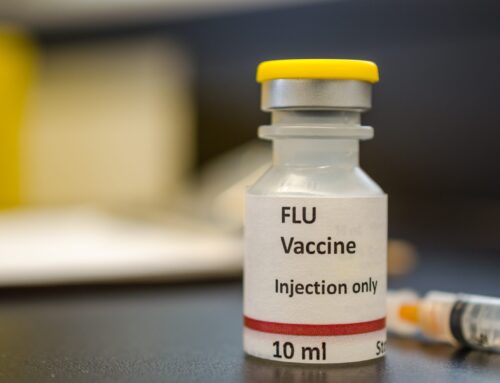Here’s the freshest, most decision-shaping evidence on tamoxifen for premenopausal women after breast cancer(HR+ unless noted). I’ve focused on large randomized trials, pooled analyses, and new “advanced” pharmacology data.
What’s most recent and important
- SOFT/TEXT long-term follow-up (JCO 2023; median 9–13 yrs):
In 4,690 premenopausal pts, tamoxifen + ovarian function suppression (OFS) improved DFS vs tamoxifen alone; exemestane + OFS was superior to tamoxifen + OFS for DFS/DRFI (HR ~0.77), with persistent benefit in higher-risk women (chemo-treated, age <35). OS differences remain small overall. Quality-of-life detriment with OFS is greatest in the first 2 years. New England Journal of MedicinePMC+1ASCO Publications - EBCTCG 2024 landmark meta-analysis (151 trials; patient-level data):
Confirms the substantial recurrence and mortality reduction from adjuvant tamoxifen, and the added benefit of ovarian ablation/suppression in appropriate premenopausal patients. (This is the most comprehensive, up-to-date aggregation.) The Lancet - Extended tamoxifen to 10 years (ATLAS/aTTom):
Continuing tamoxifen to 10 years vs 5 further reduces years 5–14 recurrence (21.4% vs 25.1%) and breast cancer mortality (12.2% vs 15.0%); endometrial cancer excess is mainly a postmenopausal issue. These trials remain the basis for extended therapy decisions when AI+OFS is not used. PubMedPMCThe ASCO Post - Endoxifen (active metabolite) and pharmacogenomics (2024–2025):
New data reinforce exposure–response: lower endoxifen concentrations associate with worse recurrence-free outcomes, with proposed target troughs >~21 ng/mL (cutoffs vary across cohorts). CYP2D6 phenotype strongly influences levels, though prospective outcomes-by-genotype remain mixed; therapeutic drug monitoring is gaining traction where available. e-crt.orgPMC+1ASCPT JournalsMedical Journals Sweden - Fertility & planned interruptions (POSITIVE; NEJM 2023 + 2024–2025 updates):
In 518 young HR+ women (many on tamoxifen), temporary interruption after 18–30 months to attempt pregnancy did not increase short-term recurrence (~3-yr BCFI ≈9%). Ongoing follow-up to 10 years continues; early reports suggest many successfully conceived and breastfeeding during the pause was feasible. PubMedAACROnc Practice ManagementCancer Network
Practical takeaways for premenopausal patients (HR+)
- Baseline standard: Tamoxifen 20 mg daily × 5 years remains a valid option for lower-risk pts not receiving chemotherapy. Adding OFS to tamoxifen improves DFS and OS (modestly), and AI+OFS gives the largest DFS/DRFI gains in higher-risk pts—at the cost of more menopausal symptoms. New England Journal of MedicinePMC
- Who most benefits from escalating beyond tamoxifen alone?
Those <35 yrs, node-positive, high grade, and/or chemo-treated in SOFT/TEXT analyses. New England Journal of Medicine - Duration matters:
If staying on tamoxifen (no AI+OFS), consider extended therapy to 10 yrs in higher-risk women who tolerate it. Balance with uterine/VTE risks (VTE risk is elevated but absolute risk is lower in younger/pre-meno women). PubMedThe ASCO PostOncology News Central - “Advanced” optimization:
Consider endoxifen-guided management (where available): check drug interactions (CYP2D6 inhibitors), adherence, and possibly adjust dose if levels are low—recognizing prospective outcomes evidence is still evolving. e-crt.orgASCPT Journals - Pregnancy plans:
For motivated patients desiring pregnancy, structured interruption after ≥18–30 months with close surveillance is supported for short-term safety by POSITIVE; resume endocrine therapy after pregnancy/breastfeeding to complete planned duration. PubMed
Key citations (quick list)
- SOFT/TEXT long-term update: J Clin Oncol 2023; exemestane+OFS vs tamoxifen±OFS outcomes. PMC
- NEJM 2018 SOFT report (8-yr outcomes): Tam vs Tam+OFS vs Exemestane+OFS. New England Journal of Medicine
- EBCTCG 2024 meta-analysis (Lancet): Pan-trial synthesis, includes tamoxifen and OFS effects. The Lancet
- ATLAS (Lancet): 10 yrs vs 5 yrs tamoxifen; recurrence & mortality reductions. PubMed
- Endoxifen exposure: 2024–2025 analyses linking >~21 ng/mL with better RFS; CYP2D6/endoxifen pharmacology. e-crt.orgASCPT Journals
- POSITIVE (NEJM 2023): Short-term safety of pausing tamoxifen/ET to conceive; follow-ups. PubMed
Tamoxifen in Premenopausal Breast Cancer
Audience: Patients and families • Use: After surgery/chemo/radiation for hormone‑receptor–positive (ER and/or PR+) breast cancer
Quick choices at a glance
Goal: Lower the chance of the cancer coming back.
| Option | Who it’s usually for | Expected benefit* | Common trade‑offs |
| Tamoxifen alone (20 mg once daily) | Lower‑risk, node‑negative, not needing chemo | Solid protection vs no therapy | Hot flashes, vaginal discharge/irregular periods, small risk of blood clots |
| Tamoxifen + ovarian function suppression (OFS) (e.g., monthly goserelin/other GnRH shot) | Moderate–higher risk; very young (<35); node‑positive; after chemo | More protection than tamoxifen alone | Stronger menopausal‑type symptoms, injection visits |
| Aromatase inhibitor (AI) + OFS(exemestane or anastrozole + monthly GnRH shot) | Highest‑risk premenopausal | Greatest protection against recurrence | More bone loss/joint aches; strict pregnancy prevention needed |
*Your absolute benefit depends on tumor size, nodes, grade, and age. Ask your team to show your numbers.
Standard dosing & duration
- Tamoxifen: 20 mg by mouth daily; with or without food; try same time daily.
- How long?
- Most start with 5 years.
- If staying on tamoxifen (not switching to AI+OFS) and risk remains higher and side effects are manageable, consider up to 10 years.
- If ovarian function stops permanently (natural or meds) and you become postmenopausal, your team may switch to an AI.
Safety & monitoring
- Before/early on: pregnancy test if needed; review meds for interactions; baseline gynecologic history.
- During treatment:
- Blood clots (VTE): sudden leg swelling/pain, chest pain, shortness of breath → ER now.
- Gynecologic: any abnormal vaginal bleeding → call your clinician.
- Eyes: report vision changes.
- Bone health: especially if using OFS or AI, get calcium/vitamin D, weight‑bearing exercise; consider DEXA as advised.
- Labs/visits: routine clinic follow‑up; labs only if indicated.
Side effects & what helps
- Hot flashes/night sweats: breathable layers; limit alcohol/caffeine; consider non‑hormonal meds (e.g., venlafaxine, gabapentin). Avoid strong CYP2D6‑inhibiting antidepressants (see below).
- Vaginal dryness/pain with sex: regular moisturizers; lubricants; ask about low‑dose vaginal estrogen (may be acceptable with oncology input).
- Mood/sleep changes: exercise, CBT‑i strategies; discuss non‑CYP2D6‑inhibiting antidepressants if needed.
- Periods: can be irregular or lighter; with OFS they often stop.
Drug interactions (important!)
- Tamoxifen must be converted to endoxifen to work well. Some medicines block this.
- Try to avoid strong CYP2D6 inhibitors, including:
- Paroxetine, fluoxetine, bupropion (antidepressants)
- Quinidine, terbinafine
- Prefer venlafaxine, citalopram, escitalopram, sertraline, or gabapentin for hot flashes/mood if appropriate.
- Always bring a full med/supplement list to each visit.
Pregnancy, fertility, and breastfeeding
- Do not get pregnant while on tamoxifen; use non‑hormonal birth control (copper IUD, condoms). Stop tamoxifen ≥2–3 months before trying to conceive (timing individualized).
- If you want children, discuss a planned pause after 18–30 months of therapy to try for pregnancy. Early data show this can be done safely in the short term with close follow‑up.
- Breastfeeding is not recommended while taking tamoxifen.
- After pregnancy/breastfeeding, resume therapy to complete the planned duration.
Advanced optimization (optional)
- If side effects are minimal but effectiveness is a concern, your team may check a blood level of endoxifen (the active form). Low levels can result from missed doses, interactions, or genetics; steps may include improving adherence, switching antidepressants, or considering dose adjustments.
When to call urgently
- New or worsening shortness of breath, chest pain, coughing up blood.
- One‑sided leg swelling/pain.
- Severe headache or vision changes.
- Abnormal vaginal bleeding.
Your next steps
- Bring your medication/supplement list to the visit.
- Decide with your team which row of the table fits your risk and preferences.
- Make a plan for birth control and, if desired, future pregnancy.
- Set up your first follow‑up (typically in 3 months) and write down questions.





